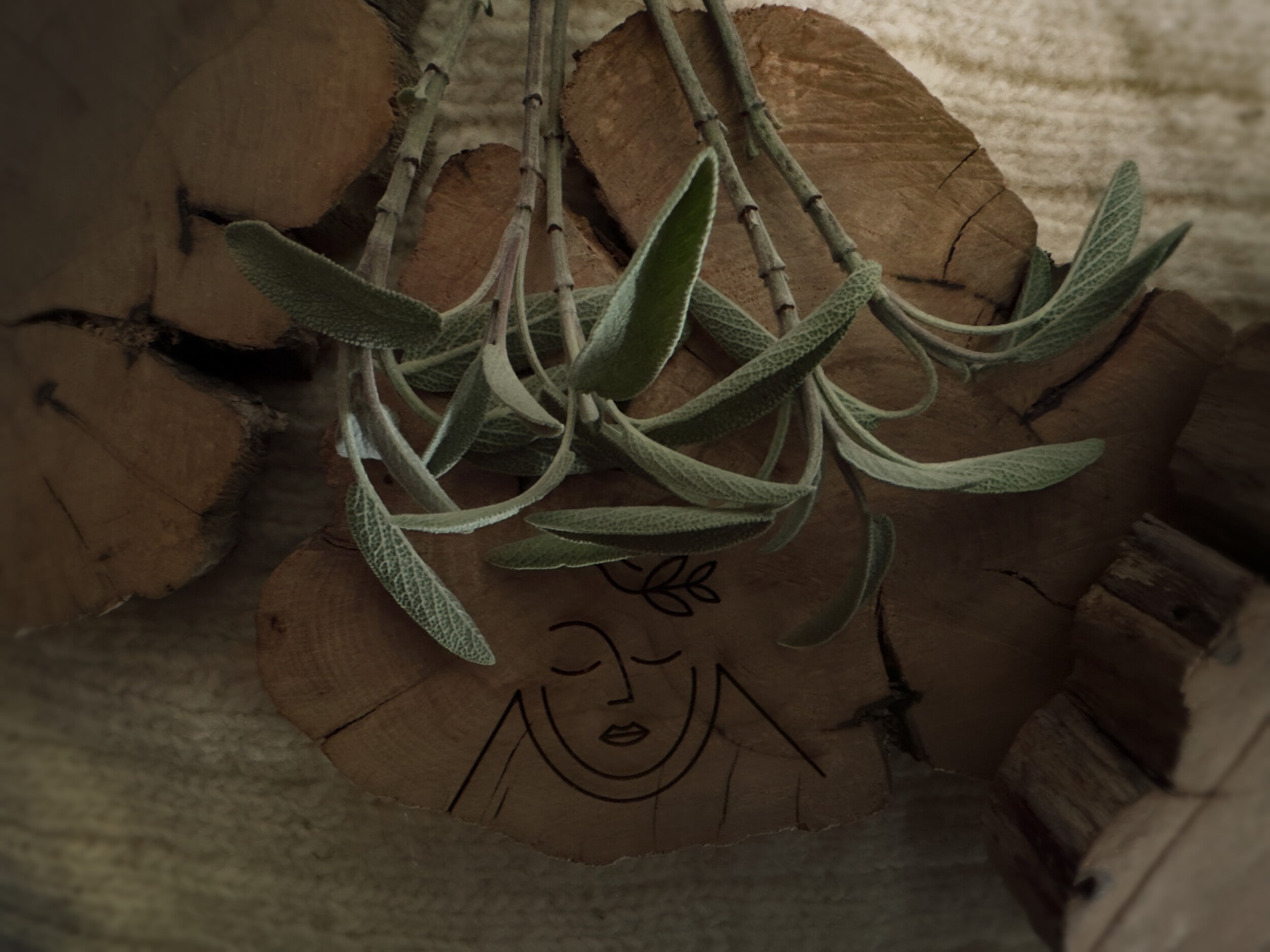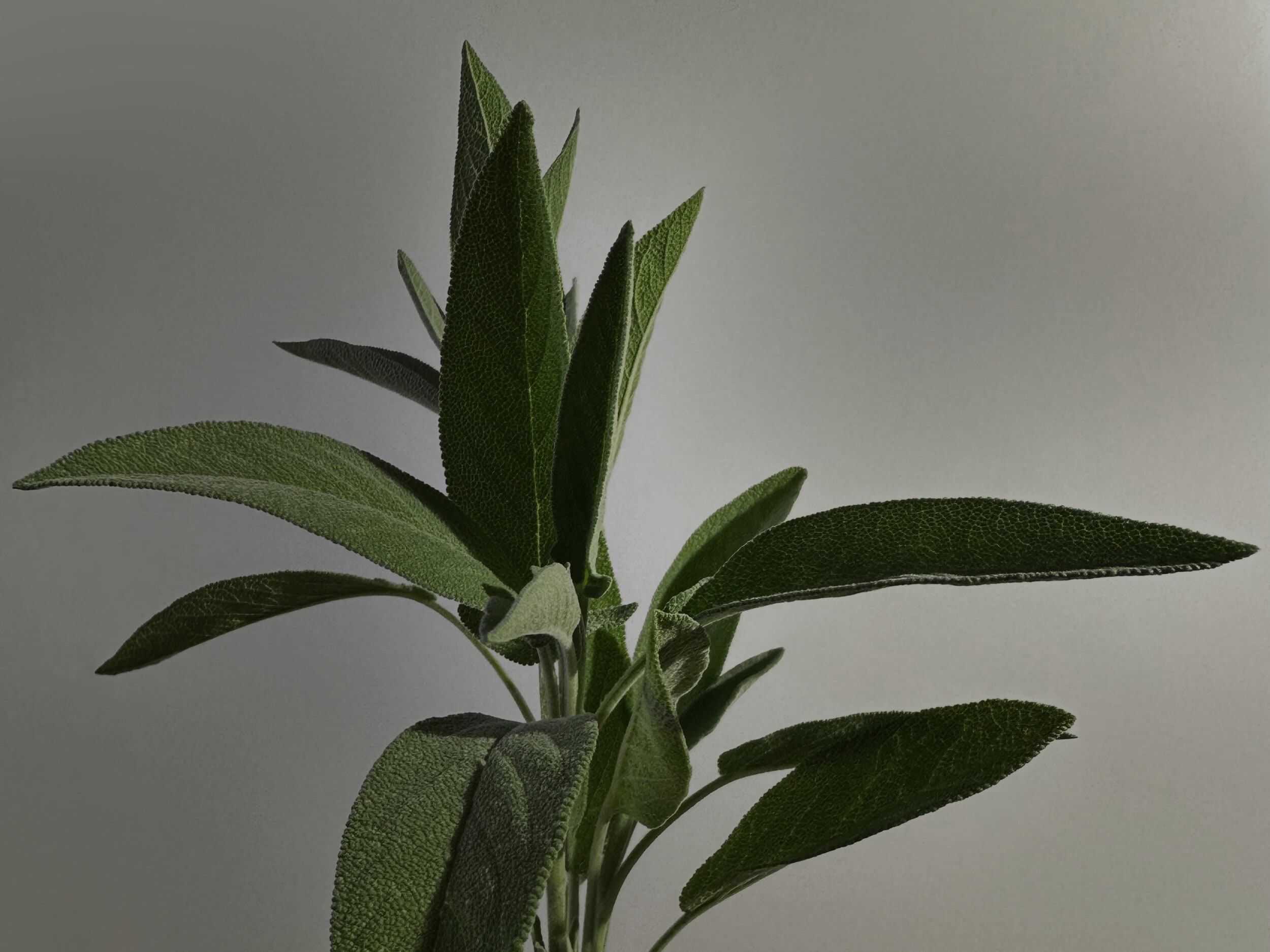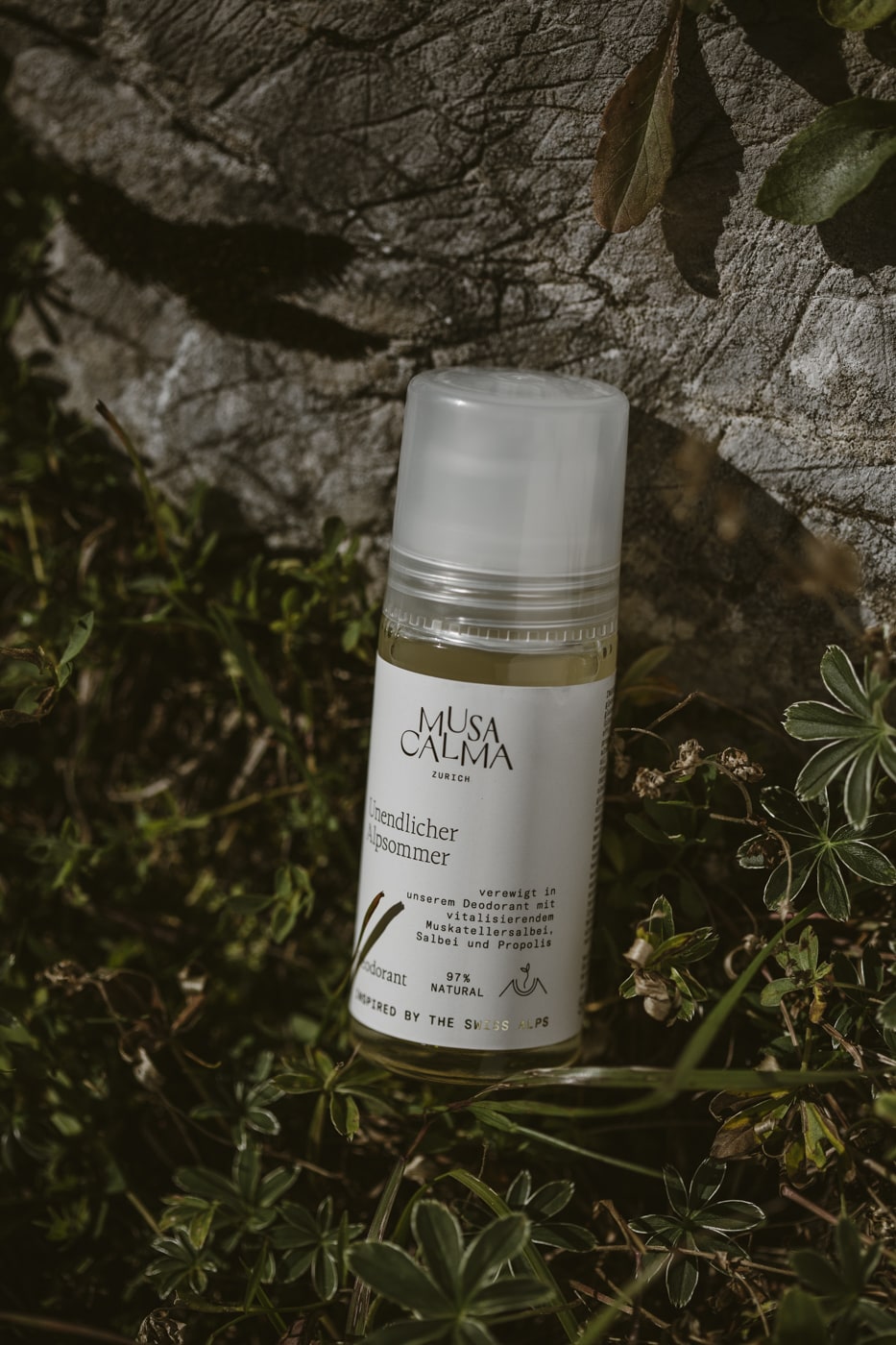 Deodorant
DeodorantINFINITE ALP SUMMER
CHF 17.90

| English | Sage |
| Latin | Salvia officinalis |
| Family | Labiates (Lamiaceae) |
| Ingredients | Essential oil, tannins, bitter substances, flavonoids |
Characteristics
The sage, which originates from southern Europe, is a semi-shrub that can grow up to 70 cm tall. The quadrangular stems are usually covered with white-grey, felt-like hairs when young and woody underneath. The leaves are direct or petiolate, opposite, oblong-ovate, finely crenate and finely wrinkled. At the base with small, oval leaflets. Whorls of purple flowers are visible at the ends of the shoots between June and October. Numerous glandular hairs and seated disc glands contain the essential oil that gives the sage leaves their characteristic and delicately aromatic smell and taste.

History and interesting facts
The origin of its name is derived from the Latin “salvare” = to heal or “salvus” = healthy. Sage was also known as Müüslichrut in Zurich in the vernacular. Sage already played an important role in early antiquity. Pliny attributed special powers to sage, saying that it cleansed snake bites and, together with wormwood, cured dysentery.
Lonicerus, Bock and Matthiolus, the fathers of botany in the Middle Ages, praised sage as a hemostatic and purifying, diuretic, cough-relieving, tonic, menstruation-promoting, wound-healing, effective against colds, especially throat and larynx, against putrid ulcers and as a preservative for teeth. Van Swieten, the founder of the Older Viennese School of Medicine, reported in the 18th century on the effects of sage as an antiperspirant that we know today. The lovely aroma of sage not only conjures up delicious dishes, but also exudes a fragrance on an incense bowl that grounds and centers the senses, as well as banishing bad smells in the home.


The use of sage in Musa Calma products
We use sage in our natural cosmetics to counteract body odor, regulate sweat production, soothe skin irritations and care for the skin.
